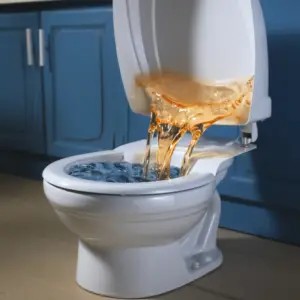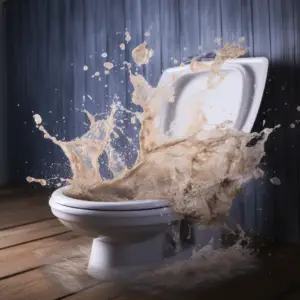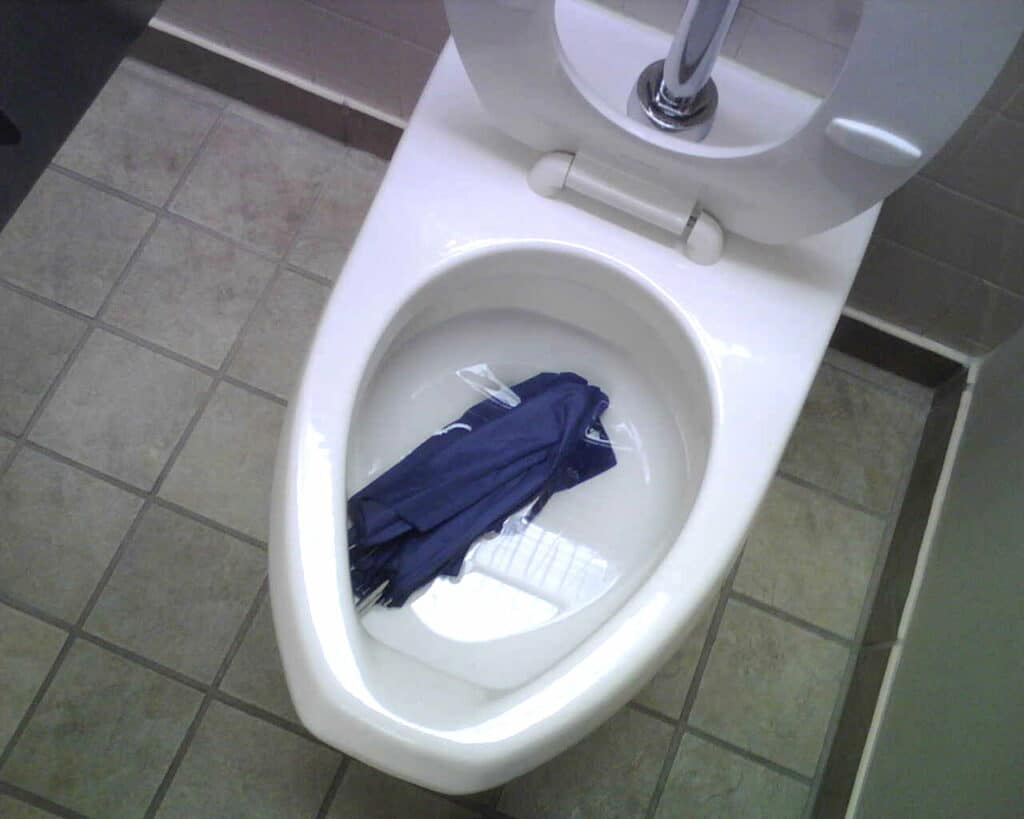Alternatives for Unclogging Toilets, Whenever you think of a clog in the toilet, the quicker solution to think of is Drano. Drano is one of the ancient clog cleaners on the market. The boggling question in everyone’s mind is, is it safe to use Drano on your toilet? What do you do if you accidentally put it in the bathroom?
To respond to these questions, First, Drano isn’t meant for toilet clogs due to its oxidizing chemical reaction when dealing with clogs that harm the toilets. If you put it in your bathroom by mistake, eliminate the clog quickly to restore the lavatory to its normal functioning.
Due to the toilet’s drain system being different, the chances of Drano reaching the clog are restricted, which is why it is not supposed to be used in the bathroom.
Table of Contents
What To Do If You Put Drano In Toilet?

You may have used Drano as a quick fix to unclog your toilet, not knowing the consequences. Many bathrooms are made of porcelain with an s-shaped porcelain trap at the toilet’s bottom, creating a siphoning impact that prevents waste flushing but still allows a bit of water to remain in the bowl to conceal sewer gasses from finding their way back up.
So, with Drano over the clog, it will continue to get hotter to fasten the decomposition process, but the same reaction will crack your toilet. Therefore, you need to act quickly to prevent that from happening. Do this:
Use a Plunger
First, use a plunger to dislodge the block but do it cautiously to avoid the chemical splashing on your skin.
Put the plunger over the toilet hole and press down gently to form a seal- then begin pulling it up and pushing it down a couple of times more vigorously to clear the blockage.
Tip: It is recommendable to put on gloves and wear eye protectors before plunging or using a snake as a protective measure
If the plunger fails, use a toilet auger/ snake
Use of a Toilet Auger/ Plumber’s Snake
A toilet auger, also called a drain snake, is the following remedy if the plunger doesn’t work.
The drain snake has coils of a metal cord with hooks connected to its end, which enable you to further extend the spring down into the strap of the toilet to pull back the block or break down the clog.
A snake with a rubber over the hooked end is ideal for protecting your toilet from damage.
Call Out a Professional
Alternatives for Unclogging Toilets the first two options fail, you can consult a plumber. The clog would signify that the issue is deep into your plumbing system and can’t be solved by home tools.
Alternatives for Unclogging Toilets is paramount not to add any other chemical substances to your toilet that already contain Drano as it reacts to produce toxic fumes that threaten your health.
Why Is Drano Not Suitable for Toilet Use?
You might have poured Drano into the toilet with hopes of unclogging your toilet but in vain. Now you’re compelled to look for some other alternatives like using a plunger to get the job done. This attempt subjects you to the risk of contaminating yourself with the mixture of water and Drano
If you add another chemical, the reaction will be dangerous, for instance, poisoning or explosive. Drano comprises active components like ammonia which releases a toxic gas known as chloramines which irritates the eyes, causes chest pain, and causes difficulty breathing.
Drano also causes severe issues with your toilet and pipes. The chemical works on clogs through an oxidizing chemical reaction. As a result, heat is generated, which cracks the toilet’s porcelain, softens the pipes’ PVC, or even further corrodes metal pipes, leading to expensive repairs.
Therefore, to protect your plumbing, don’t put Drano in your toilet; it is safe to use in sink drains.
4 Best Other Ways to Unclog the Toilet

Apart from the two already discussed- the Toilet auger and the Flange plunger, here are other alternatives you can try to unclog your toilet.
Baking Soda and Vinegar
This combination is a powerful non-toxic cleaner that you can use to unclog your toilet safely. Start by pouring a cup of baking soda into the lavatory.
Give it two to five minutes, then slowly pour two cups of vinegar. Once the two products hit each other, a chemical reaction forms bubbles.
Allow the mixture to settle and bubble for a substantial time before flushing the commode to see whether the clog has dissolved.
Dish Detergent and Hot Water
A dish liquid or shampoo is a home remedy to unclog your toilet. Heat a gallon of water, add a bit of the dish detergent or shampoo to the toilet bowl, and allow it to sit. Once the water is hot and not boiling, pour it into the toilet bowl and let it for 10-15 minutes to soften the clog well enough to be flushed down the drain.
Bleach
Alternatives for Unclogging Toilets haven’t used any other chemical on your toilet, it is safe to use bleach. Using it as a first option for clogs is a very effective method. Similar to the dish detergent procedure, it is with bleach except substituting the soap for 2-3 cups of bleach.
Allow it to sit for 1-2 minutes before adding a powdered soap, and give it 10-15 minutes to properly soak before flushing your unit.
Natural Enzymes
Bio-Clean toilet enzymes will clean your plumbing system by removing dead organic wastes with natural bacteria and enzymes.
It breaks down waste particles into mineral ash, carbon dioxide, and water, which is easily flushed via the water system without fumes or pump damage. Alternatives to Toilet Unclogging This strategy is best used overnight because it takes time to address big difficulties.
An historic chemical favorite for kitchen and bathroom clogs is Drano. However, toilet blockages destroy porcelain toilets and soften PVC, which is costly to repair. Before the chemical reacts, use a plunger or drain snake to unclog your toilet if you accidentally spill Drano in. Call a plumber promptly if needed.


